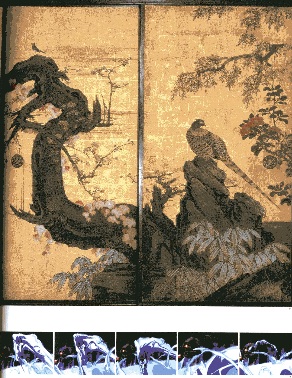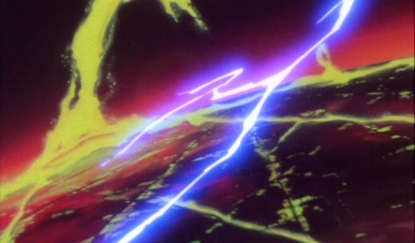Japanese Animation and New Media
Week Six: Chapter Ten: Structures of Depth
In Super Flat, his superflat exhibition held in 2000, Murakami Takashi provocatively makes connections between the arts of Edo Japan (1603-1868) and contemporary Japanese popular arts, especially manga, anime, and artwork inspired by them such as his own.
The first full-colour example in the catalog juxtaposes a famous ukiyo-e print from Hokusai’s Thirty-Six Views of Mt Fuji (1831?) and stills from an animated television series Galaxy Express 999 (1979) featuring the work of animator Kanada Yoshinori.
In his essay, Murakami builds on the work of art historian Tsuji Nobuo, arguing that such images suppress a sense of depth by suppressing the gaps or intervals with the image. Basically he is saying that when the different layers are rendered with equal vividness, you do not see the background as deeper than the foreground. As a result, your eyes do not move into depth. Instead your eyes follow the lines that zigzag eccentrically across the surface.
Murakami sees the same operations at work in other Edo artists who are usually not grouped together. He also pairs Kanada Yoshinori’s animation (bottom) with Kano Sansetsu’s painting on a sliding door (above), for instance, for similar reasons, on the basis of their perceptual zigzags and eccentricity.
Murakami also links the dynamics of manga and anime character design to Edo art. In this instance, he juxtaposes a page from Hokusai’s manga with a character from “The Gutsy Frog” (Donkonjô gaeru, 1981), created b Yoshizawa Yasumi.






